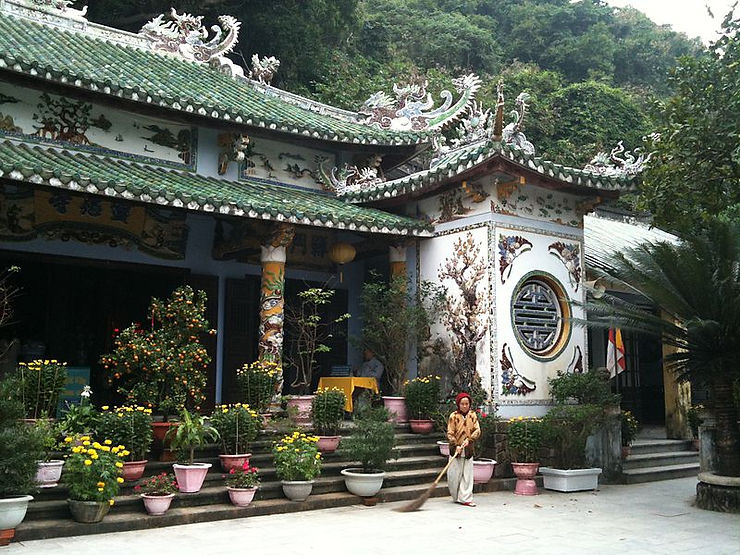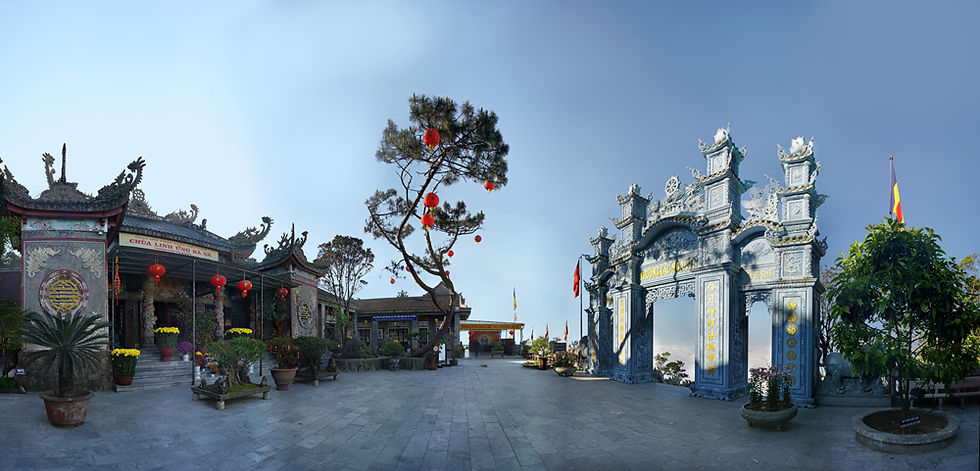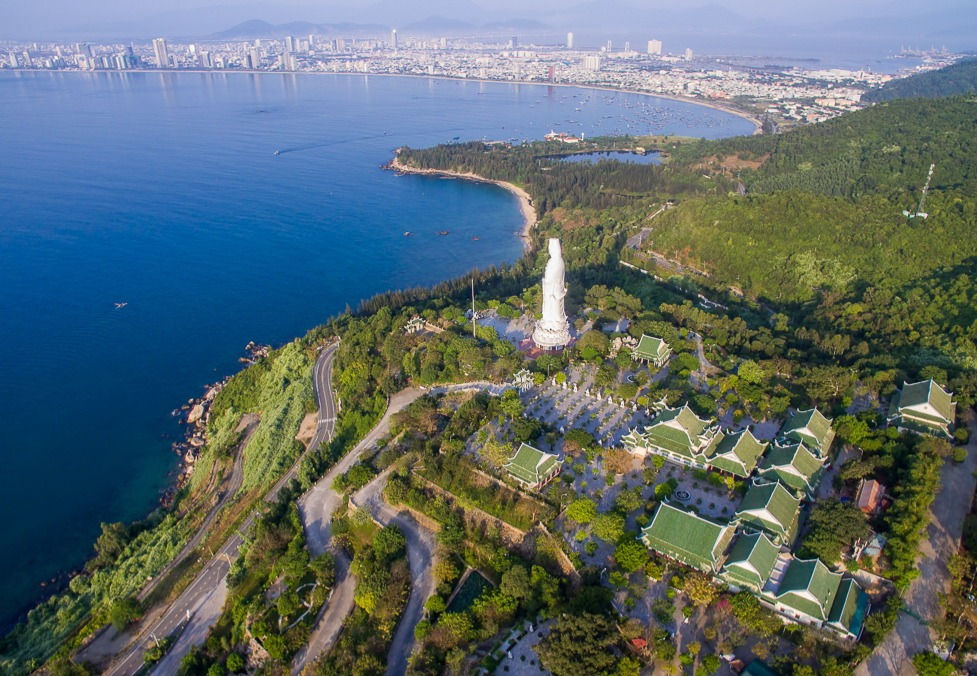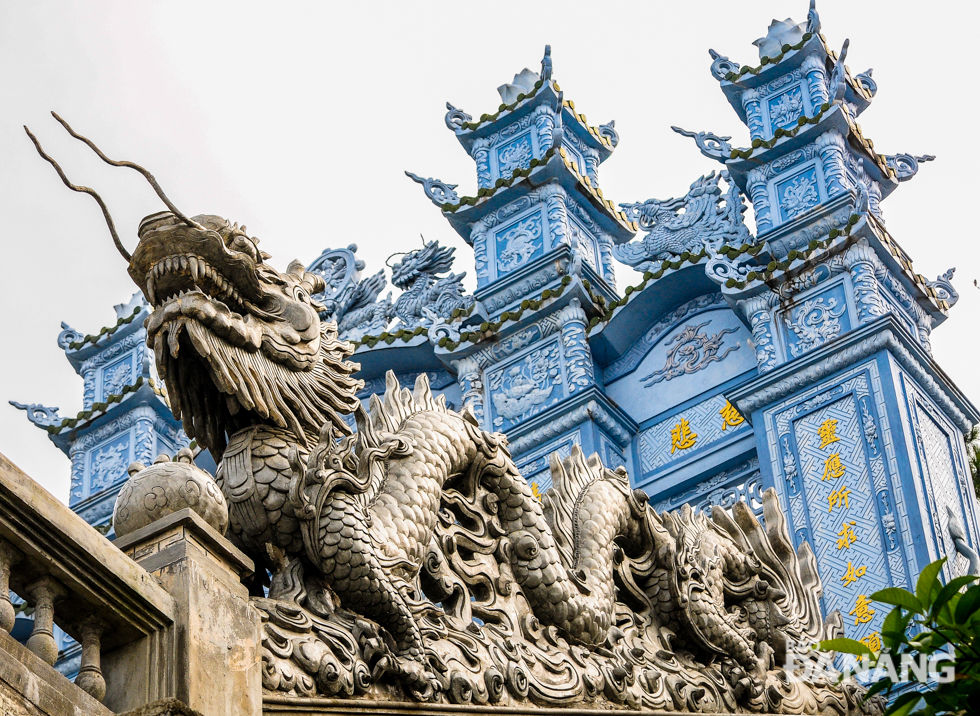The three sacred Linh Ung pagoda in Da Nang
- Hana
- Apr 28, 2020
- 4 min read
More than one time that my guests ask me about the exact location of “Linh Ung pagoda” as the information on the internet is quite confusing.
In fact, there are three Ling Ung pagodas in Da Nang! They all were named “Linh Ung”.
The name literally means “prayers would get what they wish for”.They all have their backs against the mountain and faces the sea. They all are coincidentally situated on three prime mountains: Ngu Hanh Son (Five Marble Mountains), Ba Na Hill, and Son Tra Peninsula, forming a sacred triangle protecting and embracing Da Nang.
1. The old Linh Ung pagoda in Ngu Hanh Son (Five Marble Mountain)
The oldest Ling Ung pagoda was situated 8km Southwest of Da Nang Center, on the Mt. Water, the highest mountain in the Five Marble Mountains cluster (there are five separate mountains in the cluster, named after the five basic elements of life (according to Eastern philosophy): Kim Son (Mt. Metal), Moc Son (Mt. Plant), Thuy Son (Mt. Water), Hoa Son (Mt. Fire), and Tho Son (Mt. Soil).

In the 6th year of King Minh Mang reign (1825), the king visited Ngu Hanh Son and built a pagoda called “Ngu Che Ung Chon Tu”. In 1891, this name was changed in to “Linh Ung” because of the profanation of tabooed names.
In 1997, a 30m high Xa Loi tower was built on the left of this pagoda. There are 200 stone status and 40 reliefs of Buddha, Bodhisattva, and Arhat. This tower has been recorded as a tower with the most stone statues.
The pagoda houses two valuable golden boards, one of which marks the recognition of the pagoda as a national pagoda in the sixth year of King Minh Mang’s reign, and the other recognizes the new name of the pagoda, Linh Ung, in the third year of King Thanh Thai’s reign.
How to get there: 52 Huyen Tran Cong Chua, Ngu Hanh Son District. From the foot of Five Marble Mountain, you can follow the map given to you at the entrance, climb many stairs to get to the pagoda.
Entrance fees: included in the ticket to visit Five Marble Mountain (50,000 VND)
Opening hours: 7:00 AM – 5:30 PM daily.
2. The Linh Ung Pagoda (on Ba Na Hill)
Situated on Ba Na Mountain, at the height of 1400m, the 2nd Linh Ung was built on 6/3/2004.
The pagoda has a large stone yard. A pine tree with 3 different types of leaves is planted in front of it. A 2.4m high drum that impresses visitors is placed in the sanctum. Especially, there is a reinforced concrete Buddha status of 27m high and 14m large on 6m high lotus made by Nguyen Quang Xo. The status looks majestic between the cloud and the mountain. From the 2nd Linh Ung, visitors can enjoy the panoramic Da Nang with Da Nang bay, the coastline stretching from Hai Van pass to Son Tra Peninsula, My Khe Beach and Marble Mountain.

On sunny days, the status is outstanding on green Ba Na Mountain. Visitors may feel calm when contemplating this status. Built on the mountain with subtle structure, Ba Na Linh Ung Pagoda creates a tranquil atmosphere.
How to get there: the pagoda is part of the Ba Na Hill theme park.
Entrance fees: included in the Cable Car ticket to the Ba Na Hill theme park
Opening hours: From 6 am to 7 pm every day.
3. Linh Ung pagoda on Son Tra peninsula (The Lady Buddha)
This youngest Linh Ung pagoda is one of Da Nang’s most famous landmarks. The massive 67 meters high white Lady Buddha statue dominates the area and is visible from much of the city.
Located on a hill with the shape of sea turtle facing the sea and leaning against the primeval forest with rich flora and fauna, Linh Ung Pagoda boldly marks the development of Vietnam Buddhism in XXI century and a meeting place of heaven and earth’s sacred air and people’s heart.

The old modest sanctum was built in the 18th century during the reign of Emperor Ming Mang. Old people in Da Nang often tell the story that there was a Buddha statue from nowhere to drift on the sandbank here. Believing that was an auspicious sign, people established a small shrine (later became the old sanctum) for worship, since then, the region was stable and fishermen could work in peace for a long time.
The pagoda has been restored in 2004 and extended into a complex of an ancestral home, auditorium, and Arhat statue garden. From the entrance, stone stairs and greenish giant gate lead to a wide courtyard where 18 Arhats are arranged by a rule to protect the Main sanctum. Each statue is the embodiment of different emotions “joy, anger, love, and hate” of people that makes the landscape here extremely vivid. Most of the tourists who come here are surprised to see these Arhat statues portrayed sophisticated, sharp but smooth. The courtyard is big enough for hundreds of Buddhist followers to practice their worship every the first day and full moon day according to the lunar calendar.

The new main sanctum has a contemporary style combined with the inherent tradition of pagodas in Vietnam, with a curved roof in dragon shape, the solid pillars surrounded by sophisticated sinuous dragons.
The surrounding temples are the private place for monks and nuns and are closed for visitors.
The highlight of this pagoda is the Lady Buddha statue with a height of 67m, approximately to 30-floor building and 35 m in diameter lotus, and is considered as the highest Buddha statue in Vietnam. On top of Lady Buddha’s hat, there is a 2m-high statue of Buddha, and in each layer of the tower, there are 21 smaller Buddhist statues placed in different gestures and positions (unfortunately, visitors can only visit the ground altar).
How to get there: you can self-drive by motorbike if you have one, the road is straight and pretty safe with light traffic.
Entrance fees: Free
Opening hours: From 6 am to 7 pm every day.
Dresscode: it generally practiced in Viet Name that even you are not Buddhist, you should wear respectful clothes when entering pagodas in general.




Comments